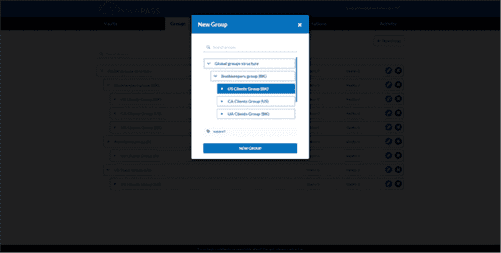Now you can connect to port 8080 on any of your worker nodes to access an instance of the NGINX service. This works even if the node you connect to isn’t actually hosting one of the service’s tasks. You simply interact with the swarm and it takes care of the network routing. In addition to deploying to Swarm, we have also described our application as a stack file. Since Linux first introduced containerization more than a decade ago, many teams have made the switch to using containers over traditional VM (virtual machine) infrastructure setups.
- Kubernetes works excellently on all operating systems and is backed by years of industry-leading expertise.
- When we create a cluster of one or more Docker Engines its called a swarm mode.
- Furthermore, all Swarm objects can and should be described in manifests called stack files.
- Docker Swarm excels within simple or smaller architectures with less containers.
- Let’s reflect that within the hosts file (of course dns is preferable, but doesn’t matter so much in a test environment).
Containerization tools like Docker have made application deployment much more simple, allowing teams to easily manage all of their microservices. However, as you increase the number of containers within a system, you’ll need something to help orchestrate these Docker containers. In this lab, you will have the opportunity to work with a simple method of creating shared volumes usable across multiple swarm nodes using the `sshfs` volume driver.
Creating Your Own Swarm
IT admins and developers may use swarm to create and manage a cluster of Docker nodes as a single virtual system. Docker Engine, the layer between the OS and container images, also has a native swarm mode. Swarm mode adds docker swarm’s orchestration features into Docker Engine 1.12 and newer releases.

You can specify a delay between deploying the revised service to each node in the swarm. You can quickly rollback as not all nodes will have received the new service. Docker swarm is a service which allows users to create and manage a cluster of docker nodes and schedule container. Each node in docker swarm is a docker daemon and docker daemon interact using docker API. A service is a description of a task or a state, whereas the task itself is the work to be completed.
Swarm mode CLI commands
Each service configuration references a Docker image and a replica count to create from that image. Swarm provides many tools for scaling, networking, securing and maintaining your containerized applications, above and beyond the abilities of containers themselves. As Docker is now managing a host cluster for container services and not a single host engine, you need to deploy container (services) in a different way. The setup consists of 3 virtual machines running Ubuntu 18.04 LTS on vSphere 6.7.
Container network ports are exposed with the –publish flag for docker service create and docker service update. This lets you specify a target container port and the public port to expose it as. Docker will add two new container instances so the number of replicas continues to match the requested count. The extra instances will be scheduled to nodes with enough free capacity to support them. Once you’ve added your nodes, run docker info on the manager to inspect the cluster’s status.
Docker best practices
We also explored Kubernetes vs. Docker Swarm, and why we use Docker Swarm. In the end, we also saw a case study on ‘How to set up Swarm in the Docker ecosystem’. Please feel free to put it in the comments section of this article “what is Docker swarm”, our experts will get back to you docker swarm icon at the earliest. By executing the above command, you can access the HelloWorld file from the remote system. To run a Docker container, it’s important to pull a Docker Image (such as MySQL) from Docker Hub. If one of the containers fails, we can use the Swarm to correct that failure.

You are to set up a Docker swarm with 3 nodes, scale the backup service up to 3 nodes, and back up your master node and restore it to a backup instance. A service is a description of a task or the state, whereas the actual task is the work that needs to be done. When you assign a task to a node, it can’t be assigned to another node. It is possible to have multiple manager nodes within a Docker Swarm environment, but there will be only one primary manager node that gets elected by other manager nodes. For management failover, both Kubernetes and Docker Swarm use raft consensus. Both technologies require 3-5 manager nodes and let health checks construct containers automatically if applications or nodes fail.
TABLE OF CONTENTS
Docker Swarm (also Swarm classic) is fundamentally different from Swarm Mode. Native Swarm functionality will continue to be supported in Docker 1.12 release, this is done to preserve backward compatibility. Docker Service Logs, Docker Events, and Docker Top are some of the core out-of-the-box capabilities provided by Swarm.

We provide a comprehensive suite of verification and enforcement services to guarantee the integrity of your software throughout its entire lifecycle. Docker was acquired in November 2019 by Mirantis, which has caused some concern among Docker Swarm users. Mirantis has stated they will continue support for Docker Swarm without any implied end date, though many are left feeling unsure about the future of Docker Swarm. Swarm node has a backup folder which we can use to restore the data onto a new Swarm. Docker container is a lightweight software package that consists of the dependencies (code, frameworks, libraries, etc.) required to run an application. Let’s continue our exploration of what Docker swarm is and the key concepts of swarm mode.
Getting Started
You will configure a swarm master and two worker nodes, forming a working swarm cluster. Creating a swarm lets you replicate containers across a fleet of physical machines. Swarm also lets you add multiple manager nodes to improve fault tolerance. If the active leader drops out of the cluster, another manager can take over to maintain operations. Docker is a tool that automates the deployment of an application as a lightweight container, allowing it to run in a variety of environments.

Administrators and developers can easily add or remove container iterations as compute demands vary with a docker swarm cluster. The user can deploy manager and worker nodes at runtime in the Docker engine’s swarm mode. All our containers will be inaccessible and cause many issues so we have docker-swarm mode architecture to deploy docker in a production environment. It enables you to deploy and manage a group of containers across multiple hosts, providing load balancing, scaling, and high availability for your applications.
Using NGINX as API Gateway
A swarm consists of one or more nodes physical or virtual machines running Docker Engine. We may orchestrate by generating tasks for each service using the API that we connect in our Swarm environment. The task allocation feature will allow us to assign work to tasks based on their IP address. The dispatcher and scheduler are in charge of assigning and instructing worker nodes on how to complete a task.


